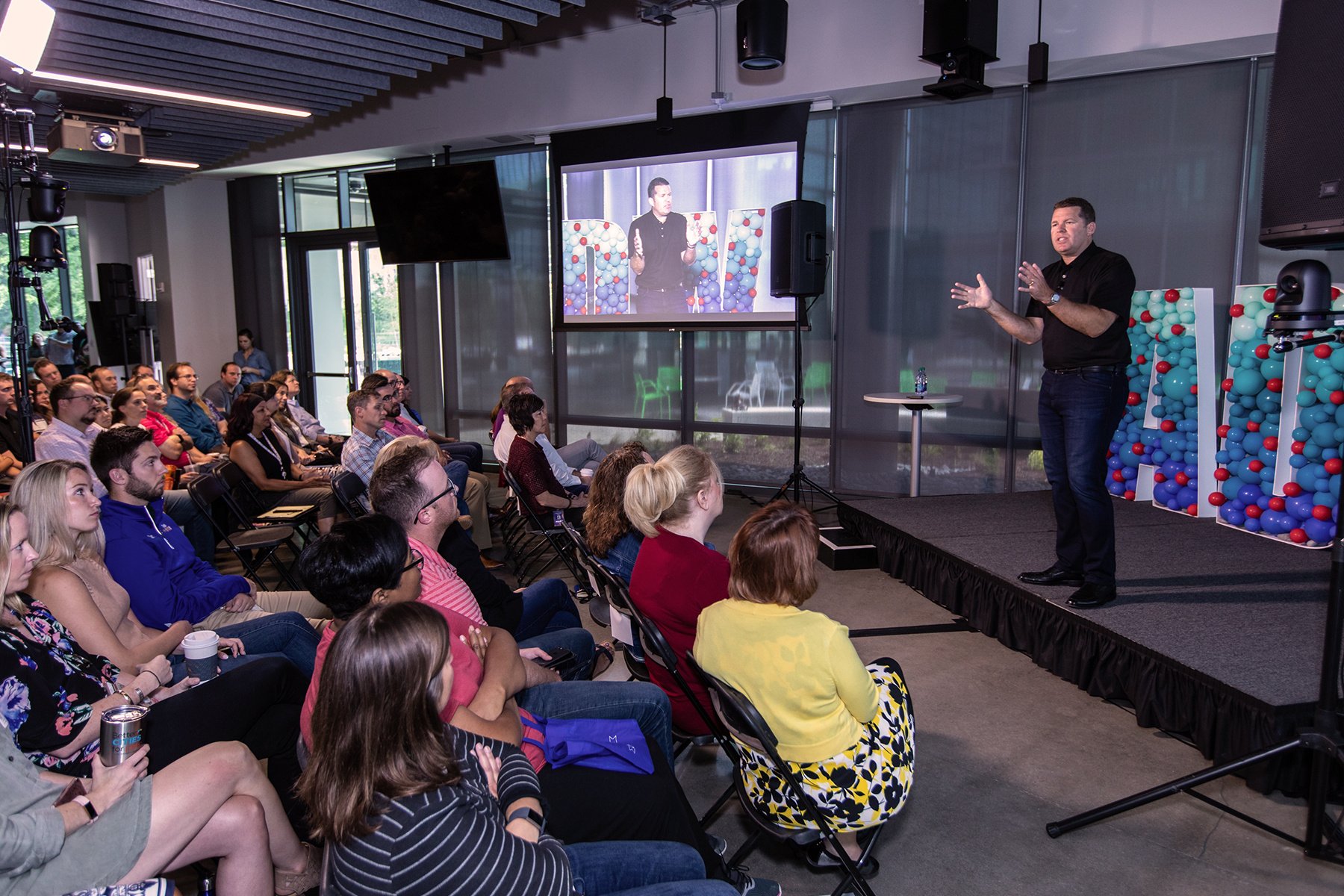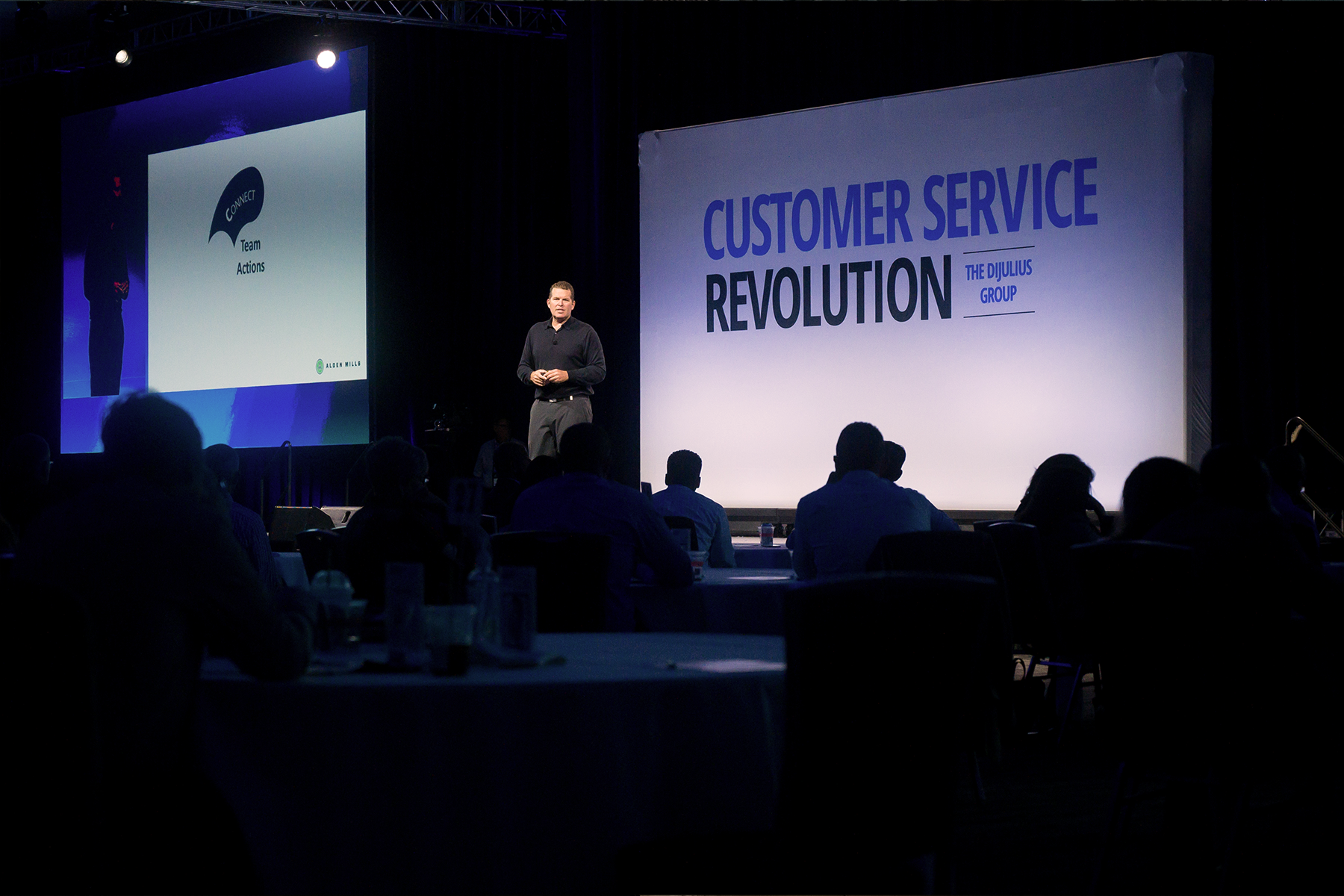alden mills
Motivational keynote experiences
that unlock high performance in people, teams, and organizations.
alden mills
Motivational Keynote experiences that unlock high performance in people, teams, and organizations.
Organizations can no longer rely on strategic initiatives to navigate the relentless waves of disruption, uncertainty, and change.
Unlocking resilience, potential, & adaptability requires a

Organizations can no longer rely on strategic initiatives to navigate the relentless waves of disruption, uncertainty, and change.
Unlocking resilience, potential, & adaptability requires a

watch alden as Keynote Speaker in action
watch alden as Keynote Speaker in action

















































an incredible
storyteller
Alden brings his keynotes to life. When you book Alden Mills, you're not just hiring ONE OF THE BEST KEYNOTE SPEAKERS, you're partnering with someone who becomes a stakeholder in the success and leadership of your audience as your inspirational keynote speaker.
| inspires | Turn audiences into stakeholders by motivating and showing participants how to embrace their true potential. |
| engages | Bring individuals, leaders, teams, and organizations together around the specific goals and objectives of the event at hand. |
| equips | Help attendees understand the opportunities and challenges before them, what they need to do to achieve and overcome, and the tools they can use to be successful. |
an incredible
storyteller
Alden brings his keynotes to life. When you book Alden Mills, you're not just hiring ONE OF THE BEST KEYNOTE SPEAKERS, you're partnering with someone who becomes a stakeholder in the success and leadership of your audience as your inspirational keynote speaker.
inspires
Turn audiences into stakeholders by motivating and showing participants how to embrace their true potential.
engages
Bring individuals, leaders, teams, and organizations together around the specific goals and objectives of the event / at hand.
equips
Help attendees understand the opportunities and challenges before them, what they need to do to achieve and overcome, and the tools they can use to be successful.









alden's Inspirational keynote speaker topics
Be UNSTOPPABLE

Unstoppable Leadership
Great leadership isn’t about power—it’s about empowering yourself and others. Master the three levels of leadership—self, others, and culture—to build trust, drive outsized contributions, and unlock the full potential of your team and organization.

Unstoppable Mindset
Success isn’t determined by your skills, resources, or circumstances—it’s shaped by your mindset. Unlock the power of an Unstoppable Mindset to turn obstacles into opportunities, build unshakable confidence, and achieve extraordinary results in any situation.

Unstoppable Teams
A group of individuals can only go so far—but a unified team can achieve the extraordinary. Learn the proven strategies to build high-performing teams fueled by accountability, alignment, and mutual respect.

Unstoppable Culture
A thriving culture isn’t built by chance—it’s created with intention. By aligning your Promise, People, and Process, you can close culture gaps, inspire loyalty, and unlock the full potential of your organization for lasting success.
Be UNSTOPPABLE

Unstoppable Leadership
Great leadership isn’t about power—it’s about empowering yourself and others. Master the three levels of leadership—self, others, and culture—to build trust, drive outsized contributions, and unlock the full potential of your team and organization.

Unstoppable Mindset
Success isn’t determined by your skills, resources, or circumstances—it’s shaped by your mindset. Unlock the power of an Unstoppable Mindset to turn obstacles into opportunities, build unshakable confidence, and achieve extraordinary results in any situation.

Unstoppable Teams
A group of individuals can only go so far—but a unified team can achieve the extraordinary. Learn the proven strategies to build high-performing teams fueled by accountability, alignment, and mutual respect.

Unstoppable Culture
A thriving culture isn’t built by chance—it’s created with intention. By aligning your Promise, People, and Process, you can close culture gaps, inspire loyalty, and unlock the full potential of your organization for lasting success.
energizing.
actionable.
impactful.
Consistently recognized as one of the best KEYNOTE speakers alive today, ALDEN engages the heart and mind. As an inspirational keynote speaker, his talks are packed with relatable stories, actionable strategies, and INSPIRING calls to action.
Why choose Alden?
- Proven Leadership Experience: From commanding Navy SEAL teams to leading multimillion-dollar companies, Alden is an inspirational keynote speaker that uses unmatched storytelling to bring real-world insight to every stage.
- Actionable Insights: Every opening and closing keynote leaves audiences with practical tools they can use immediately.
- Dynamic Delivery: Alden’s high-energy presentations captivate audiences and ignite positive change as an inspirational keynote speaker.
- Track Record of Success: He has empowered leaders and teams at top organizations to overcome challenges and drive results.
energizing.
actionable.
impactful.
Consistently recognized as one of the best keynote speakers alive today, ALDEN delivers unforgettable experiences that engage both the heart and mind. As an inspirational keynote speaker, his keynotes are packed with relatable stories, actionable strategies, and INSPIRING calls to action.
Why choose Alden?
- Proven Leadership Experience: From commanding Navy SEAL teams to leading multimillion-dollar businesses, Alden is an inspirational keynote speaker that uses unmatched storytelling to bring real-world insight to every stage.
- Actionable Insights: Every keynote leaves audiences with practical tools they can use immediately.
- Dynamic Delivery: Alden’s high-energy presentations captivate audiences and ignite positive change as an inspirational keynote speaker.
- Track Record of Success: He has empowered leaders and teams at top organizations to overcome challenges and drive results.
When Should You Hire a Motivational Keynote Speaker?
When is the right time to bring in a inspirational keynote speaker?
Immediately to ensure availability! A motivational keynote speaker can create lasting impact at pivotal moments - whether you're launching a major initiative, navigating change, celebrating milestones, or realigning teams around a shared vision. The right speaker can energize your audience, build confidence, and inspire forward momentum when it’s needed most.
Alden Mills is a trusted choice as your opening and closing inspirational keynote speaker, with his rare blend of Navy SEAL leadership, entrepreneurial success, and real-world insight, Alden connects deeply with audiences facing pressure, change, or high-stakes transformation. His high-energy keynotes are custom-built to match your goals and challenges—equipping your team not just to feel inspired, but to take action with clarity and confidence.
Alden Mills Speaking Fee
Alden Mills Keynote Speaker Fees & Booking Info: Alden Mills delivers powerful keynote presentations and high-impact leadership workshops - available in person or virtually - specifically designed to meet your goals and for your audience.
Alden Mills delivers powerful keynote presentations and high-impact leadership workshops - available in person or virtually - specifically designed to meet your goals and for your audience.
Alden Mills keynote speaker fees start at $25,000 for in-person events in the continental U.S. and most of Canada, and $17,500 for virtual events.
While Alden has a standard speaking fee schedule that includes the the high-level of preparation and customization he is known for, the exact fee for your event will depend on a few key factors:
- Event location and delivery format (in-person or virtual)
- Length of the keynote or workshop
Additional engagements (keynotes, breakouts, workshops, panels, etc.)
- Virtual keynotes typically start at $17,500, and include Alden logging in 30-minutes early for AV check.
- In-person keynotes in the continental U.S. and most of Canada begin at $25,000, and include a minimum of three hours on-site, covering from the AV check to the keynote through to the final scheduled activity, such as a book signing or VIP meet-and-greet.
- Local events near San Francisco, CA qualify for a special rate.
To receive a firm quote with full details on how Alden can best support your event, you can reach out directly to his team by emailing josh@alden-mills.com or calling 617-245-8015. You can also submit an inquiry here.
What is Alden Mills Like as a Business Speaker?
What It Is Like to Have Alden Mills as Your Keynote Speaker?
Bringing Alden Mills to your event is more than booking a keynote speaker—it’s creating a transformational experience designed around your goals and audience. Whether you're planning a corporate kickoff, executive retreat, or company-wide summit, Alden delivers a powerful mix of energy, authenticity, and actionable insight that leaves a lasting impression.
Audiences are drawn in by Alden’s compelling stories, shaped by his unique journey as a Navy SEAL, Inc. 500 CEO, and leadership coach. But it’s the real-world strategies he shares—tools to lead through change, build resilient teams, and drive results, that make him the go-to business speaker for organizations navigating real-world challenges.
That’s why leading technology firms, financial institutions, and pharmaceutical companies turn to Alden as their business speaker during moments of growth, transformation, or cultural change. Time and again, he’s described as “the right speaker at the right time.”
What sets Alden apart is his partnership approach. He takes the time to understand your organization, tailor his message, and ensure every attendee walks away with something meaningful. Whether launching a new initiative, strengthening culture, or engaging top leaders, Alden delivers opening and closing keynote speaker content that aligns with your mission and elevates your team.
His core leadership themes - like building strong foundations, driving continuous improvement, and leading with a people-first mindset - stick with audiences long after the event ends. When Alden takes the stage as an opening keynote speaker, he doesn’t just inspire—he equips teams to move forward with clarity and confidence.
Are Alden's Keynotes Customizable?
Yes, Alden’s keynotes are fully customizable.
As one of the best keynote speakers working today, Alden designs each presentation around the specific goals, challenges, and culture of the organization he’s working with. He takes the time to understand your audience and crafts content that’s relevant, actionable, and aligned with your event’s mission making every keynote a high-impact, personalized experience.
Booking Alden as your Keynote Speaker
Book Alden Mills as the inspirational keynote speaker for Your Event:
Bring world-class inspiration to your stage with Alden Mills - former Navy SEAL, bestselling author, and high-performance leadership expert. Whether you're planning a corporate conference, leadership retreat, or virtual summit, Alden’s keynotes and workshops empower audiences to lead with purpose and perform at their best.
Every event is customized to your goals and includes personal collaboration with Alden to ensure his message resonates deeply with your team. From engaging storytelling to practical leadership strategies, Alden is an inspirational keynote speaker that brings unmatched energy and authenticity to every appearance. Get In Touch
Alden Mills Availability
Alden’s calendar fills up quickly, especially during peak conference seasons. To check Alden Mill's availability as a motivational keynote speaker, contact us with your potential event date(s) and location. We’ll get back to you promptly with details. Get In Touch
Contact Alden Mills Booking Agent
To book Alden Mills for a keynote or speaking engagement, you can reach out directly to his team by emailing josh@alden-mills.com or calling 617-245-8015. You can also submit an inquiry through his official website here. Get In Touch
If you prefer to work through a speaker bureau, Alden is booked by many of the major speakers bureaus.
unstoppable books
Alden wrote a trio of inspiring books that serve as powerful guides for personal and professional growth.
Unstoppable Mindset: How to Use What You Have to Get What You Want is a transformative work that empowers readers to activate their potential and achieve their goals.
Unstoppable Teams: The 4 Essential Actions of High-Performance Leadership provides a blueprint for building and leading high-performing teams, drawing on Mills' extensive experience in both military and business leadership.
Be Unstoppable: 8 Essential Actions to Succeed at Anything uses the power of storytelling to teach readers his proven framework for success, encouraging them to shape their future and live their dreams.
Together, these books encapsulate Alden's philosophy of relentless progress and the power of an UNSTOPPABLE mindset.
unstoppable books
Alden wrote a trio of inspiring books that serve as powerful guides for personal and professional growth.
Unstoppable Mindset: How to Use What You Have to Get What You Want is a transformative work that empowers readers to activate their potential and achieve their goals.
Unstoppable Teams: The 4 Essential Actions of High-Performance Leadership provides a blueprint for building and leading high-performing teams, drawing on Mills' extensive experience in both military and business leadership.
Be Unstoppable: 8 Essential Actions to Succeed at Anything uses the power of storytelling to teach readers his proven framework for success, encouraging them to shape their future and live their dreams.
Together, these books encapsulate Alden's philosophy of relentless progress and the power of an UNSTOPPABLE mindset.
Contact Alden
Have an event inquiry or want to learn more about booking a session? Share your details and Alden and his team will get back to you within 24 hours.